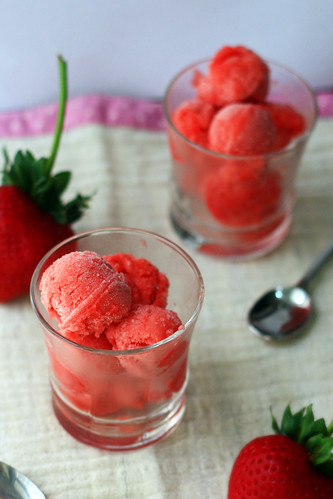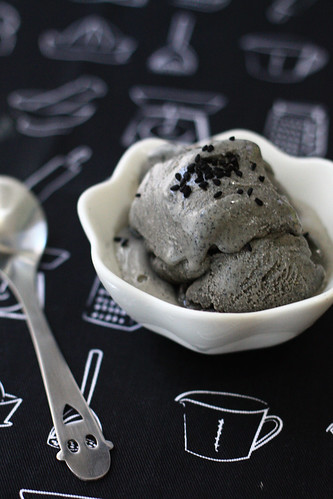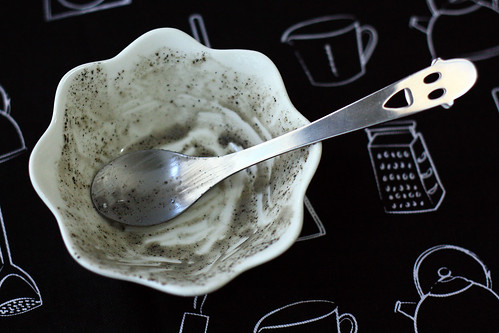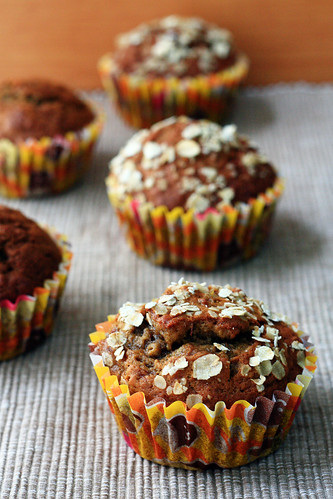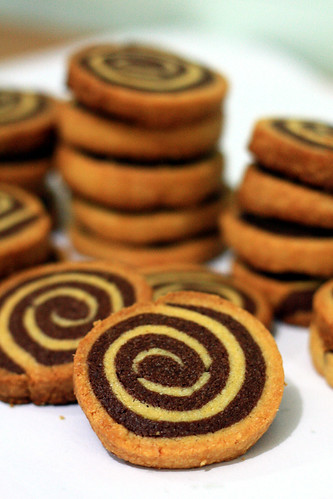I love tea. I'd prefer it any time over soft drinks or juice. I love drinking many types of tea, from the slightly bitter Chinese Pu-
erh tea after dinner, Japanese green tea (
Matcha) whilst eating sushi, or a rich, creamy mug of
Hong Kong milk tea. The post title refers to my two most recent bakes - Earl Grey Tea cookies and
Matcha Chiffon Cake.
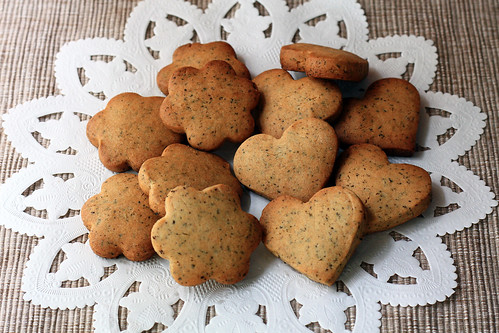
These cute little cookies are of the shortbread variety, but the method of making this is different to the pinwheel ones I made previously. I really love these cookies because when you take a first bite, it might seem that the tea flavour is not strong enough, but after a second, third bite, it tastes just like drinking a cup of milky Earl Grey Tea. They do not have a strong orange-y flavour either. You really can't resist munching on one...then another one...until the whole plateful is gone!

I first tried making chiffon cakes last year. At first I was really scared of whipping egg whites, but after making countless of these cakes (my mum loves them because they're not too sweet, and because of the soft and cottony texture), I think I've mastered the art of making a perfect chiffon. This particular
matcha chiffon has a fresh and clean fragrance, and the ever-so-slight bitter aftertastes balances the sweetness perfectly. I've included some of my humble tips on making chiffon cakes below.

Both of these treats are great for snacking, and of course perfect consumed with a cup of your favourite tea during a relaxing afternoon! What is your favourite type of tea to use when baking?
Early Grey Tea CookiesAdapted from Vanlily's blog (Original recipe in Chinese)Makes 16-20 small cookies
1 teabag Earl Grey tea (I used
Twinings)
1tbsp Milk
70g Butter, at room temperature
30g Icing sugar
Pinch Salt
120g All purpose flour
1/4tsp Baking soda
1. Put the milk into a small microwavable bowl and nuke it for around 10 seconds to warm it up. Cut open the tea bags, put the leaves into the milk. Cover and leave to infuse for around 30 minutes.
2. Beat butter and icing sugar with an electric mixer until soft and fluffy, beat in the tea-milk mixture
3. Sift in the salt, flour and baking soda. Gently fold into the mixture with a rubber spatula until a soft dough forms.
4. Cover the bowl with plastic wrap and chill for 30
mins.
5. Meanwhile, preheat oven to 180C. Gently flour your work surface and rolling pin. Roll out the dough gently until around 5mm thick, use cookie cutters to cut our shapes and transfer to a parchment-lined baking sheet. Place the baking sheet, cookies and all into the freezer for around 5 minutes.
6. Bake for around 15-20minutes until pale golden. Remove and cool on a cooling rack, where they will crisp up.
Matcha Chiffon Cake
From Chiffon Cake Book by Junko Fukada (Original recipe in Chinese)
Makes one 17cm cake
(plus some extra batter)
3 Egg yolks
80g Sugar
50ml Vegetable oil
60ml Water
80g Cake (low-protein) flour
10g
Matcha (green tea powder)
4 Egg whites
1. Preheat oven to 180C. Whisk egg yolks, 1/3 of the sugar, oil and water together.
2. Pour in sifted flour and
matcha, whisk until totally incorporated and no lumps remain.
3. Using an electric mixer, whip the egg whites until foamy. Pour in half the remaining sugar, beat for 2 more minutes, add in the rest of the sugar and beat until soft peaks form.
4.Place 1/3 of the beaten egg whites into the flour mixture. Use a whisk to quickly mix everything together.
5. Add in the rest of the egg whites, incorporate gently but quickly. When some white streaks remain, swap to a rubber
spatula and fold gently until the mixture is homogeneous.
6. Pour the mixture into the chiffon cake tin (you may need to slightly grease it beforehand to prevent sticking, but I skip this step). Rap the tin against the table a few times to get rid of large air bubbles.
7. Bake for 20 minutes until a toothpick inserted comes out clean.
8. The cake must be cooled upside down; stick the tin on a tall heavy bottle, leave until cake is completely cool before removing it from the tin.
Tips for making chiffon cakes- When mixing the yolk mixture, ensure that
no lumps remain to ensure a smooth batter after adding egg whites. You don't want to be deflating the mixture whilst attempting to get rid of those lumps!
- An indication as to when the whites are ready, a small 'peak' will form when you pull up your beaters. After reaching that stage, whip for another minute on low speed to
stabilise the air bubbles.
- Mix gently when incorporating the two mixtures. Usually, just to be on the safe side, I use a spatula upon the second addition.
- If your cake is being stubborn and refuses to leave the tin, use a thin sharp knife or thin offset spatula and run it around the cake. it should pop out really easily.

